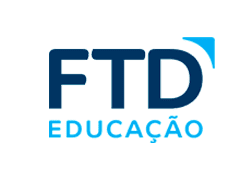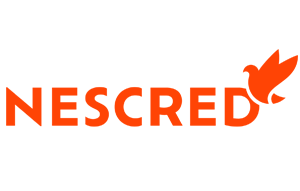
Solução Proposta
Solução SaaS (Software como Serviço) de Assinatura Digital e Workflow através do Portal QualiSign.
Necessidade do Cliente
Atender uma demanda crescente de gestão de contratos.
Sobre a FTD Educação
FTD é uma homenagem a Ferre Théophane Durand, Superior Geral da Congregação Marista entre os anos de 1883 e 1907. Durante sua gestão, ele incentivou os Irmãos a escreverem livros escolares para as demais disciplinas. Esses livros passaram a integrar a coleção, que recebeu o título de Coleção de Livros Didáticos FTD. A Editora FTD faz parte do Grupo conta atualmente com 1500 colaboradores. Tem sua matriz administrativa e Editorial em São Paulo, sua gráfica e logística em Guarulhos-SP e várias filiais de vendas e distribuidores nas principais praças do Brasil. O grupo Marista está sediado em Curitiba-PR e possui, além da FTD Educação, universidades, escolas e hospitais, na região sul e sudeste do Brasil.

A Experiência
Muitas vezes quando lemos um livro não imaginamos todo o processo que está por trás de sua produção. Um processo que envolve colaboradores, fornecedores e prestadores de serviço, seja para diagramação, revisão de textos, ilustração e a própria geração de conteúdo. Assim é na FTD Educação, uma empresa com 116 anos que produz milhões de livros para o ensino infantil, fundamental e médio. Para que esta produção possa ser realizada é necessário que todos os autores, prestadores de serviços e fornecedores estejam com seus vínculos contratuais formalizados, organizados, controlados e que possam ser localizados de forma rápida sempre que necessário. Nessa hora a área jurídica entra em ação, apoiando as áreas internas na criação e gestão de contratos de forma a garantir os direitos e responsabilidades das partes, bem como assessorar de forma ágil e assertiva, sempre que demandada.
O início da expansão em novos mercados
Cinco anos atrás a Editora iniciou um novo processo de atuação e começou a entrar em novos mercados e a realizar novas atividades, o que provocou o crescimento expressivo de produção e vendas de livros e, por sua vez, de todas as confecções e análises de contratos com os prestadores de serviços, fornecedores, entre outros. “Para dar conta desse crescimento impactante no departamento, aumentamos o quadro de profissionais da área jurídica, mas logo percebemos que isso não era o suficiente. Precisávamos rever nosso processo para atender esta demanda crescente”, comentou Victor Linhares Bastos, Gerente Jurídico da FTD Educação, do Grupo Marista.
Impacto na operação
Implementação em 3 etapas
Identificado que os impactos se davam principalmente no aumento da atividade operacional, revisamos os procedimentos e estabelecemos a mudança na base de atendimento ao cliente interno.
A 1.a etapa do processo foi unificar as minutas de contratos da área editorial. A maioria dos contratos eram bem parecidos e, portanto, geravam trabalhos repetitivos, subtraindo tempo e hora de trabalho desnecessários do profissional, que poderia estar dedicado em outras atividades mais estratégicas. “O que mudava entre uma contratação e outra era o prazo de entrega, condições e valores. A partir dessa constatação, unificamos as condições em uma minuta padronizada e implantamos o “contrato mãe”, sendo que as especificidades de cada caso fossem indicadas exclusivamente em um anexo”, comentou Rosana Cristina de Oliveira, Supervisora Jurídica. Da mesma forma, outra racionalização similar ocorreu nos contratos de cessão de direitos autorais relativos à produção de conteúdo.
O 2.o passo foi implementar um sistema para gestão do departamento. Isto ocorreu em 2015 com a escolha do sistema Espaider, inicialmente com foco no contencioso e na solicitação de contratos. Mas isso não foi suficiente. Toda a grande demanda contratual ainda era impressa e o atendimento era lento. Precisávamos de mais eficiência na operação.
Diante das necessidades, iniciamos o 3.o passo que ocorreu em 2017 com a implantação da geração automática dos contratos massificados, com assinatura digital e eletrônica da QualiSign, integrada ao Espaider.
Assinatura Digital eliminou o “cartão de milhagem”
Diante das novas atuações comerciais da FTD EDUCAÇÃO, os volumes triplicaram nesse período partindo de 200 para 500 contratos mensais, o que representou 6000 contratos/ano em 2017. Além disso, o volume físico de documentos era gigantesco e eles ficavam arquivados no térreo da empresa e o jurídico lotado no 3.o andar. “As idas e vindas para a coleta de assinaturas internas junto ao outro prédio da empresa, onde fica o Editorial e o arquivo era tão intensa que costumávamos dizer que o contrato tinha cartão de milhagem, de tanto viajar!” disse Victor. “Alguns comentavam inicialmente que era caro ter e manter a assinatura digital e demonstramos que caro era o correio, a firma reconhecida, as idas e vindas para colher as assinaturas físicas, muitas vezes utilizando um motoboy ou Sedex. Além da vantagem financeira, a questão de segurança jurídica e eficiência na operação também prevaleceram”, explicou Victor.
Custo Benefício e ROI
Foco na eficiência, contratos de valor menor, grande quantidade física, esforço operacional grande, justificaram a implementação da assinatura digital. “Internamente não houve restrição para o uso da assinatura digital e eletrônica, porque fizemos uma análise de custo/benefício e ROI, considerando os valores gastos na gestão dos contratos, custo hora de cada profissional envolvido no processo de formalização de contratos e outros itens”, concluiu Victor.
Benefícios
Agilidade
O ganho de agilidade foi impressionante. “No processo inicial, quando o contrato estava no papel, levávamos em torno de 30 dias desde a criação do contrato até o fechamento da formalização. Hoje o prazo é de apenas 1 dia. O ganho de agilidade foi obtido principalmente pelo sistema de gestão e pela assinatura digital”, enfatizou Victor.
Produtividade
“Todos ganharam o tempo que era dedicado a atividades operacionais redirecionando-as para atividades de cunho estratégico, voltadas ao negócio da FTD: a área jurídica, a área Editorial, a diretoria e os prestadores de serviços” disse Rosana.
Redução de Custos
A redução de custos até o momento ultrapassa 60%. Ainda há expectativa de aumento deste ganho em função da incorporação de outros tipos de contratos,” esclareceu Victor.
Mobilidade
A diretoria assina digitalmente via aplicativo no celular, proporcionando conveniência ao diretor de poder assinar onde quer que ele esteja, de maneira simples e rápida.
Controle e gestão dos contratos
A questão do controle dos contratos sempre foi crítica. “Era um desgaste invisível, que gerava insegurança por não se saber onde estava o contrato. Com as novas ferramentas, identificamos imediatamente qual o status desta ou daquela contratação e onde o documento está parado” comentou Victor.
Impacto positivo com colaboradores e prestadores de serviços
Victor cita também que os colaboradores passaram a desenvolver suas atividades com mais satisfação, por conta da redução significativa das rotinas jurídicas repetitivas.
Além da assinatura digital o departamento jurídico optou em utilizar a assinatura eletrônica na formalização de seus contratos, ou seja, por login e senha, apenas para prestadores de serviços de menor porte (MEI), que não possuem o certificado digital.
“Melhorou a vida para o prestador porque o contrato precisava ser assinado manualmente. Muitas vezes, o prestador precisava se deslocar fisicamente à editora para agilizar a entrega dos documentos. Esta evolução é um caminho sem volta! Dada a repercussão positiva, ultimamente temos recebido solicitações de prestadores de serviço e de produtores de conteúdo residentes ou em viagem ao exterior para assinar de forma digital ou eletrônica seus documentos perante a FTD” explicou Rosana.
Evolução e Expansão do uso
A assinatura digital vem crescendo gradativamente. “No começo era uma “dor” apenas do jurídico e de alguns diretores que precisavam assinar pilhas de papéis. Agora, com o processo digital e integrado ao sistema de gestão de contratos, a pessoa que pede ao jurídico um contrato percebe que a velocidade de resposta de sua solicitação é muito mais rápida, porque o documento “corre” apenas pela via digital. Agora o documento não fica mais represado na mesa de alguém para assinatura”, comentou Victor.
Este ganho de eficiência e agilidade se deu apenas na área editorial. O próximo passo será a expansão do uso para toda a diretoria. “O objetivo inicial será a assinatura das atas de reunião, depois, em um futuro próximo, a intenção é expandir para a área comercial com os contratos com as escolas”, afirmou Victor.
“Minha torcida é para que as novas tecnologias sejam cada vez mais produtivas. Assim teremos mais tempo para sermos humanos”, concluiu Victor.


















